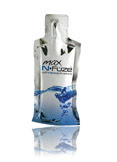After surgery, the body will have to undergo some significant physical therapy to get back into the shape it was before surgery. Most people would complain that they're not the same after healing from the operation, but that is mostly due to their lack of action right after the procedure. Unless you have been amputated or significantly disabled, there is no reason that you can't regain and even improve flexibility, balance, stability, and strength after going under the knife.
The amount of time after a major surgery, and how exercise is done, depends a lot on the sort of treatment that you have undergone.
Toning and weight loss exercises are recommended for patients to help them get back into shape. Since surgery effectively reduces your activity level, it results in a slower metabolism. When this happens, you will gain weight.
Regardless of what your goals and your methods are, it is of vital importance to ensure sufficient hydration throughout the process of exercising.
You will have to take baby steps to get back to your previous fitness level. Going too quick too soon will only make things worse for you. Here are some exercises to begin with after certain surgical procedures. Always consult your physician before getting into such programs.
Breast Surgery
About a week after surgery, you'll still be experiencing discomfort. But recovery will be aided by some simple arm exercises. Perform steady breathing during the following:
Lift the arm found on the side of the body where the breast operation took place, and move it as though to simulate the movement of brushing one's hair or eating. Elevate the same arm you exercised to a level above the heart for a period of an hour. This exercise will help reduce the amount of swelling. While your arm is elevated, you can do some hand exercises, clenching and opening your hand in order to ease the discomfort.
After a few weeks, you may have healed enough to do the exercise below.
Get a hold on a stick or broom handle in both hands with palms up and arms stretched out. Lift it overhead, hold for 3 seconds or so, then lower to the pelvis. Do several reps to best effect.
Hysterectomy
After a hysterectomy, you will have to do some exercises for your back, pelvic, and abdominal muscle areas. Again, try to get your doctor to speak to you about these exercises before starting.
Lie on a hard mattress or on the floor with knees bent and hands behind your head. Have the small of your back press slightly against the surface, then increasing the pressure. If it hurts, stop.
Raise your head and shoulders slightly off the floor, paying attention to the contraction of the abs. Take care not to move the chin toward the chest. Then slowly lower the head and shoulders back to the floor. Repeat several times.
Bridges will help you strengthen your hips and back. Lift your hips as high as you can and hold it for a few seconds. Lower and repeat for 10 reps or so. You can then alternate with abdominal exercises to maximize the effect.
This exercise may require you padding on your knees or on the floor itself. Roll over onto your knees and gradually raise an arm and the alternate leg. Repeat with the other side, alternating for around 10 reps.
Again, don't try to exercise if you feel intense pain as distinguished from mild discomfort. Take it slow, building up strength over time.
The amount of time after a major surgery, and how exercise is done, depends a lot on the sort of treatment that you have undergone.
Toning and weight loss exercises are recommended for patients to help them get back into shape. Since surgery effectively reduces your activity level, it results in a slower metabolism. When this happens, you will gain weight.
Regardless of what your goals and your methods are, it is of vital importance to ensure sufficient hydration throughout the process of exercising.
You will have to take baby steps to get back to your previous fitness level. Going too quick too soon will only make things worse for you. Here are some exercises to begin with after certain surgical procedures. Always consult your physician before getting into such programs.
Breast Surgery
About a week after surgery, you'll still be experiencing discomfort. But recovery will be aided by some simple arm exercises. Perform steady breathing during the following:
Lift the arm found on the side of the body where the breast operation took place, and move it as though to simulate the movement of brushing one's hair or eating. Elevate the same arm you exercised to a level above the heart for a period of an hour. This exercise will help reduce the amount of swelling. While your arm is elevated, you can do some hand exercises, clenching and opening your hand in order to ease the discomfort.
After a few weeks, you may have healed enough to do the exercise below.
Get a hold on a stick or broom handle in both hands with palms up and arms stretched out. Lift it overhead, hold for 3 seconds or so, then lower to the pelvis. Do several reps to best effect.
Hysterectomy
After a hysterectomy, you will have to do some exercises for your back, pelvic, and abdominal muscle areas. Again, try to get your doctor to speak to you about these exercises before starting.
Lie on a hard mattress or on the floor with knees bent and hands behind your head. Have the small of your back press slightly against the surface, then increasing the pressure. If it hurts, stop.
Raise your head and shoulders slightly off the floor, paying attention to the contraction of the abs. Take care not to move the chin toward the chest. Then slowly lower the head and shoulders back to the floor. Repeat several times.
Bridges will help you strengthen your hips and back. Lift your hips as high as you can and hold it for a few seconds. Lower and repeat for 10 reps or so. You can then alternate with abdominal exercises to maximize the effect.
This exercise may require you padding on your knees or on the floor itself. Roll over onto your knees and gradually raise an arm and the alternate leg. Repeat with the other side, alternating for around 10 reps.
Again, don't try to exercise if you feel intense pain as distinguished from mild discomfort. Take it slow, building up strength over time.
About the Author:
Discover the amazing abdominal muscle exercise you need to do to achieve peak fitness. Click to visit http://www.homefitnessinsider.com where you will find the latest tips and resources on managing your health and fitness.







No comments:
Post a Comment